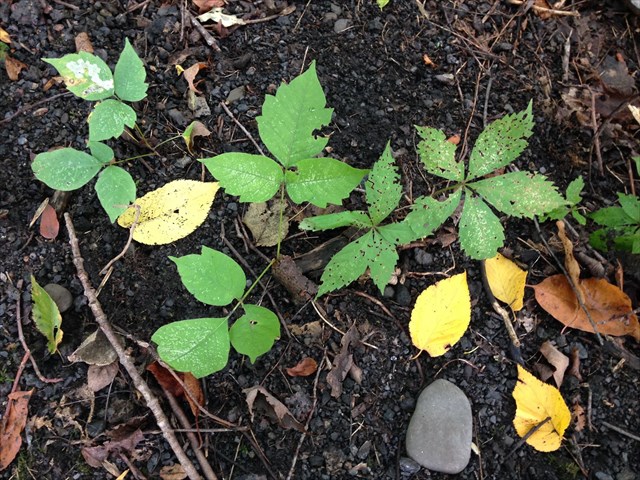

"What does poison ivy look like?" is more than merely an academic question, since being able to identify a plant sometimes known as the "itchy rash vine" with confidence can prevent you from an unfortunate encounter with it.The scientific name of the plant is Toxicodendron radicans.Knowing the old rhyme of "Leaves of three, let it be" is a nice start, but it does not go far enough. The leaves here are not shiny either, and the stem is grey, not green. On the east coast, Poison Ivy can grow well near salt water, when living in these conditions the leaves take on a curly waxy appearance. Does the Poison ivy plant have thorns on the stem - Aesir Figure 10: A poison ivy young shoot, flowers, mature foliage with typical three leaflets, and white berries.
#DOES POISON IVY HAVE THORNS HOW TO#
In addition to learning how to identify poison ivy, wearing long-sleeve shirts and pants to help cover skin is a great way to prevent skin irritation from possible contact.Poison ivy can have bark, or a woody textured surface to older branches on vines or freestanding growths, but it will not have the fine hair or bristles that you might see on a bramble or a variety of other forest plants. Be aware that poison ivy is a sunny woodland edge plant and is commonly found along hiking trails. Also, grape leaves are simple whereas poison ivy has divided, or compound, leaves.”Īlthough these similar-looking plants will not cause a severe reaction the way poison ivy might, it’s best to avoid contact if visitors are not sure of the exact plant identification. “Grape vines usually have hairs that are generally not as dense as poison ivy, and their fruits are dark purple when ripe. Black raspberries and blackberries, like poison ivy, often show leaflets of three, but those plants are covered with thorns, which poison ivy lacks,” explains Palmer. “The leaflets and vines of the Virginia creeper look very similar to poison ivy, but Virginia creeper has five leaflets and is generally not toxic to touch, except that some people may contract a “photo-dermatitis” from contact with the fall foliage followed by exposure to sunlight.
/https://www.thespec.com/content/dam/thespec/life/health-wellness/2014/06/28/what-to-do-if-you-have-a-reaction-to-poison-ivy/B821646796Z.1_20140627122920_000_GEJ1955N0.2_Gallery.jpg)
The fruits are clusters of pale gray or whitish, pea-sized berries.Īccording to Alex Palmer, a naturalist at the Forest Preserves’ Sand Ridge Nature Center, Poison Ivy can often be confused with several other plant species found throughout the Forest Preserves. Poison ivy plants have compound leaves divided into three leaflets, while the vines of poison ivy are dark gray or black with ample hairs, by which the plant attaches itself to trees and other upright objects. With the old adage in mind, “leaflets three, let it be,” learning how to spot this native plant is an important way to ensure comfort when exploring forested areas. Early in the season, the leaves transition to an array of stunning, warm colors including golden yellow and vibrant red. In addition to serving as a food source for various animal species, poison ivy also provides a beautiful sight during autumn. In fact, the berries produced by poison ivy, which develop in fall, provide an important food source for many bird species during winter when other food sources are scarce. (Dogs and cats are not usually affected, but short-haired pets can sometimes have a reaction to poison ivy.) Other species in the Forest Preserves, including birds, insects and other animals, are not affected by the urushiol. But it may surprise people to learn that it typically only affects two animal species: humans and pigs. Poison ivy contains the oil urushiol, which can irritate the skin and cause those itchy rashes.

However, there are some positives to this native plant! When people think of poison ivy, itchy rashes are often the first thing to come to mind.


 0 kommentar(er)
0 kommentar(er)
